I like using a few plays out of a horns set every season. These sets are changing year to year depending on the players I have on the team. However, I like the horns movement in a quick hitter no matter what kind of players I have playing.
A horns set is having two players on the elbow or elbow extended and setting a double ball screen in the set. The double ball screen is what I use to determine whether the play falls into the category of horns or just a 1-4 high set usually. The horns set is usually started in a 1-4 high set. Out of this setup, I group plays in 3 different categories. They are horns sets, 1-4 high sets, and what I call horns post entry.
The horns post entry does not use a double ball screen but that is just the wording I use. I just find it quicker and easier to stay horns post entry rather than what it exactly is which is 1-4 high post entry.
The double ball screen up front gives a bunch of options for the offense to attack the defense. When the horns sets are added into 1-4 high sets and post entry sets then the offense is giving the defense the same look with a bunch of different movements and actions from the same starting look. Plus I have found most teams are good at guarding a single ball screen but can really struggle with the second ball screen. So here are four quick hitters I like to use.
Play #1
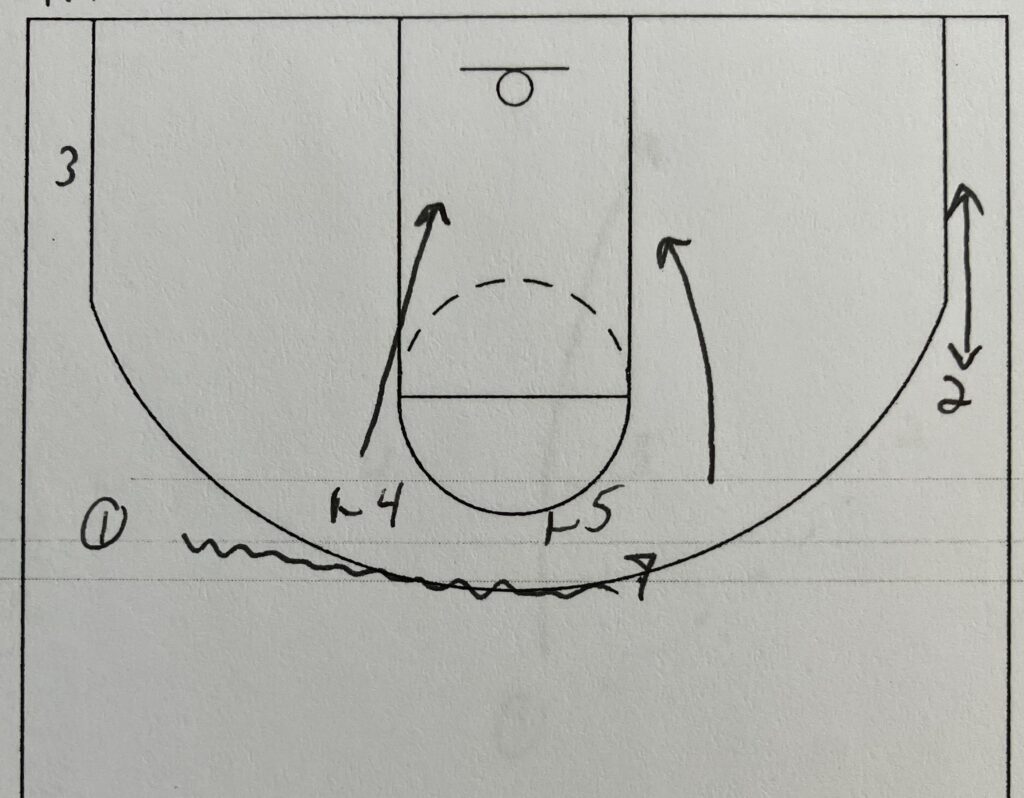
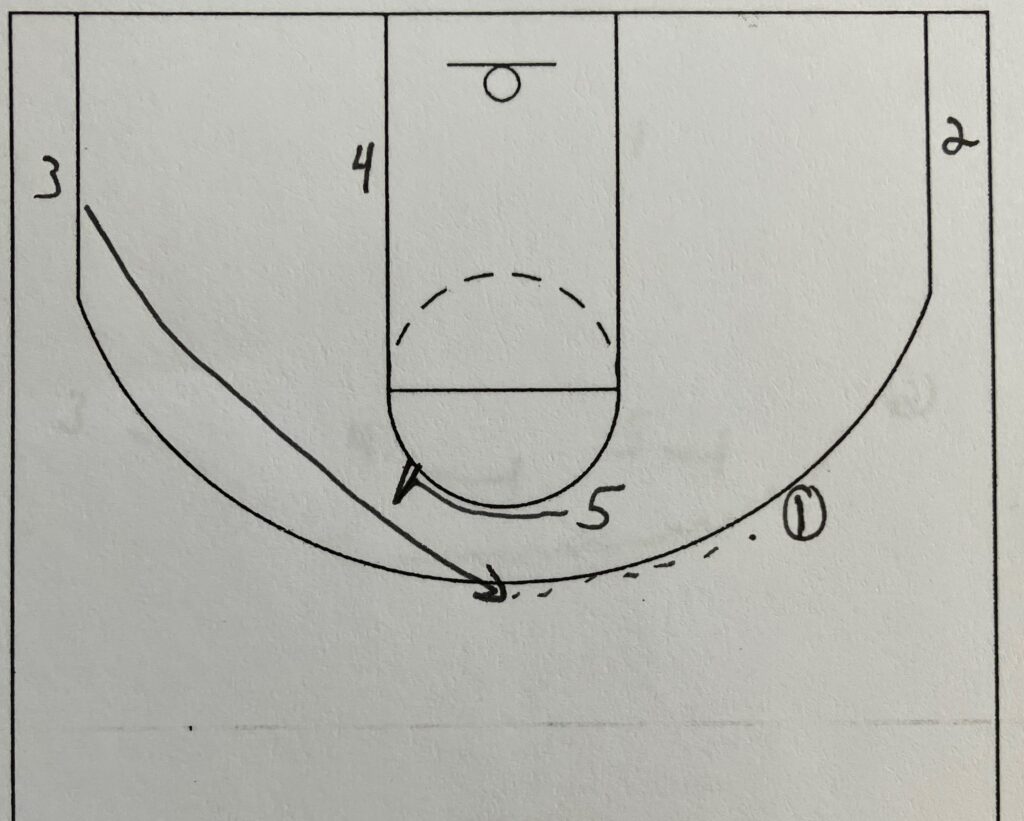
The first play is what I would consider to be the basic horns quick hitter. The point(1) dribbles to one side of the floor. The point is setting up the horns movement but going to one side. The two bigs(4 and 5) step up and set the double ball screen. The wing(2) that the point is coming towards moves down to the corner. As the point comes across the wing(2) can move up and down the sideline depended on where his defender is moving to the horns motion.
If the point(1) can turn the corner after the 2nd ball screen to the basket, then it is an easy layup without needing to do anything else. Anytime a player coming off the double ball screen can turn the corner and shoot a layup, then that is what the offense should be doing. If the wing(2) defender helps off on the point(1) then it is an easy kick-out wide open 3-pointer for the wing(2).
If the point(1) cannot turn the corner off the double ball screen, then the point should continue all the way across the floor to foul line extended. The big(4) is going to roll off the first ball screen for the 2nd option. If a defense likes to hard hedge ball screens, then sometimes this roll by the big(4) will be open. The 2nd reason for the big(4) being the 1st ball screener to roll is to hopefully make the forwards(3) defender step over to the lane to help on that roll. If the forward(3) defender steps over to help then the next option is even more wide open.
If the point(1) cannot turn the corner off the double ball screen and the big(4) is not open on the roll, then the center(5) is setting a down screen for the forward(3) to come to the top of the key for a pass and 3-point shot.
I like this play because 4 of the 5 offensive players have a chance to get an open shot. The defense is going to help dictate who is going to get the shot. Depending on how the defense defends the horns movement, the offense should have somebody coming open. So this simple play can be ran four straight times and have four different players shooting the ball. This makes it very hard on the defense to defend because they can not key on any one player.
Play #2


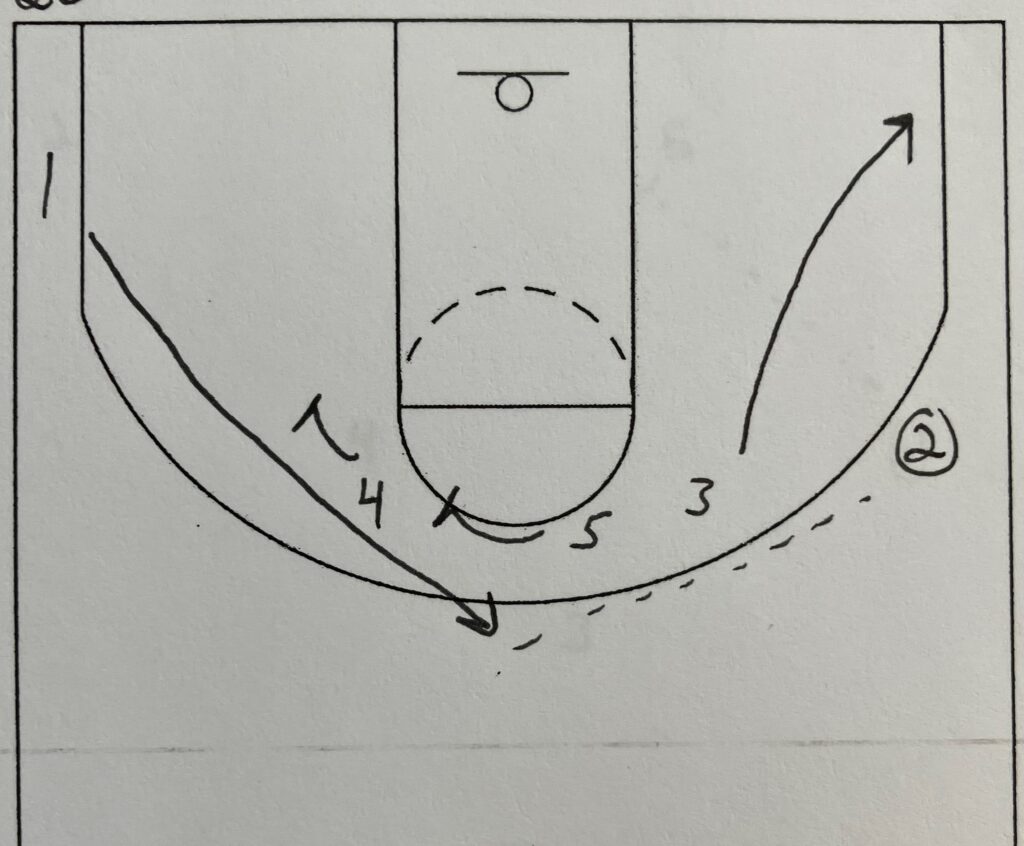
The 2nd play starts out a little different but it still has the double ball screen so I classify this play still as a horns set. The point(1) enters the ball to the forward(3) and runs a smash cut to the ball side corner. If the smash cut is open then the forward(3) can pass right back to the point(1) for a layup. If the smash cut is not open then the point(1) goes to the corner.
The wing(2) drops to the corner because the horns movement is coming at them again. It is a good idea on horns sets to get the wing players to drop to the corner if the double ball screen is coming at them. By dropping to the corner, the player using the double ball screen should have more room to turn the corner and get to the basket off the double ball screen.
After the initial pass and cut, the forward(3) uses the double ball screen. This is the horns movement. If the forward(3) can turn the corner and get to the basket, then they go to the basket. If the defense does not give up the layup, then the forward(3) passes out to the wing(2) coming back up out of the corner. After this pass the forward(3) continues to the corner they are moving towards.
The big(4) and center(5) continue after the double ball screen and move straight into a stagger screen for the point(1) coming back up out of the corner. This is a quick play to get the point(1) coming off of a screen for a shot. I know there are times where the point(1) does not get as many shots as they should because they are having to create their own shots whereas the other players get open using screens.
This play gets the point(1) off the ball and then coming right back to the ball off of a double screen for a shot. If the point(1) is a good scorer then this is a play to get the defense to worry about the double ball screen, but it is really to get that good scorer a good scoring opportunity coming off of a double stagger screen.
Play #3
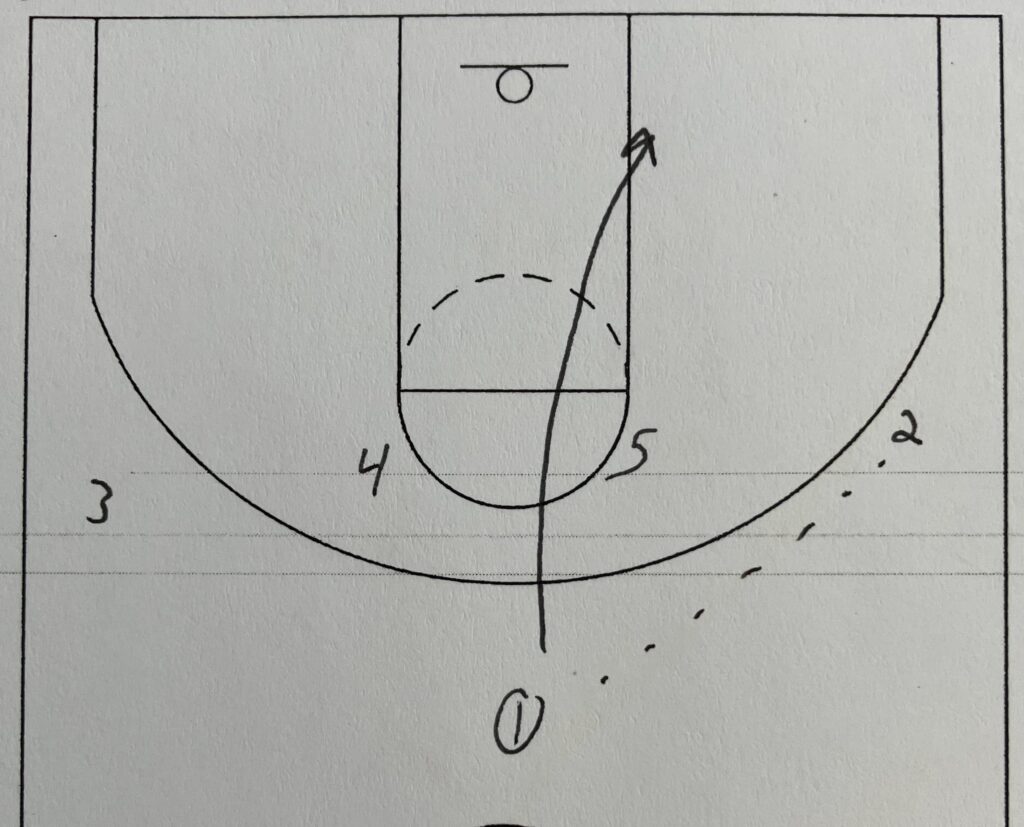
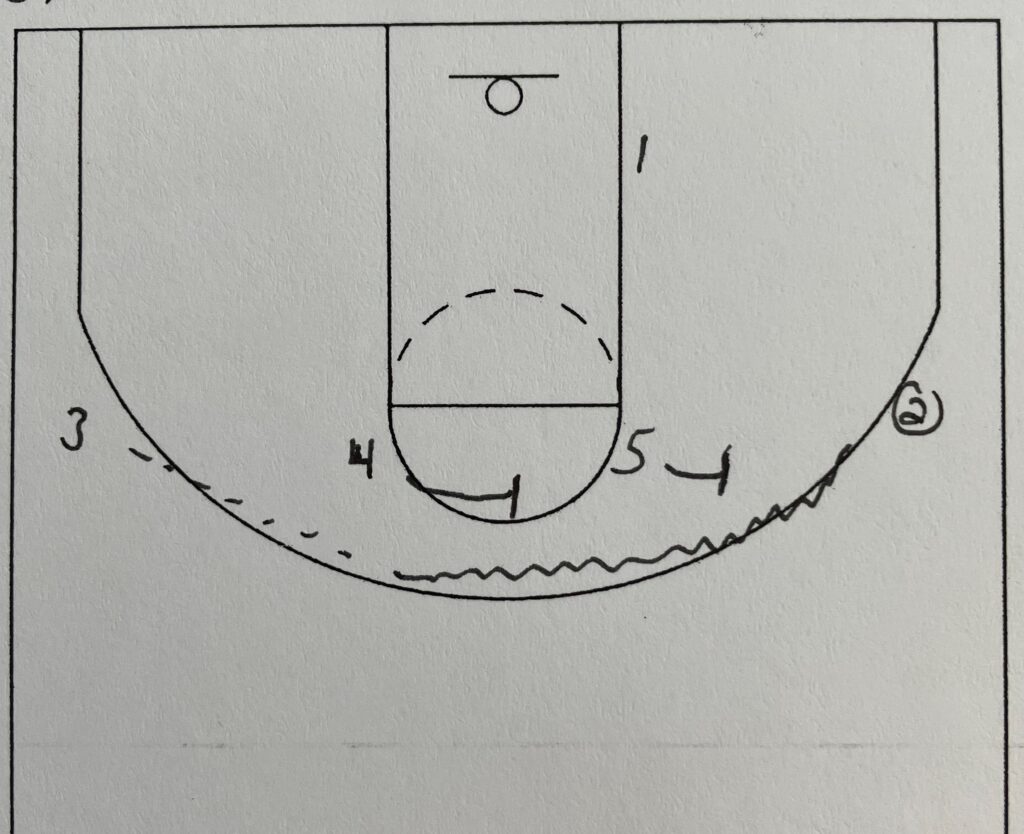
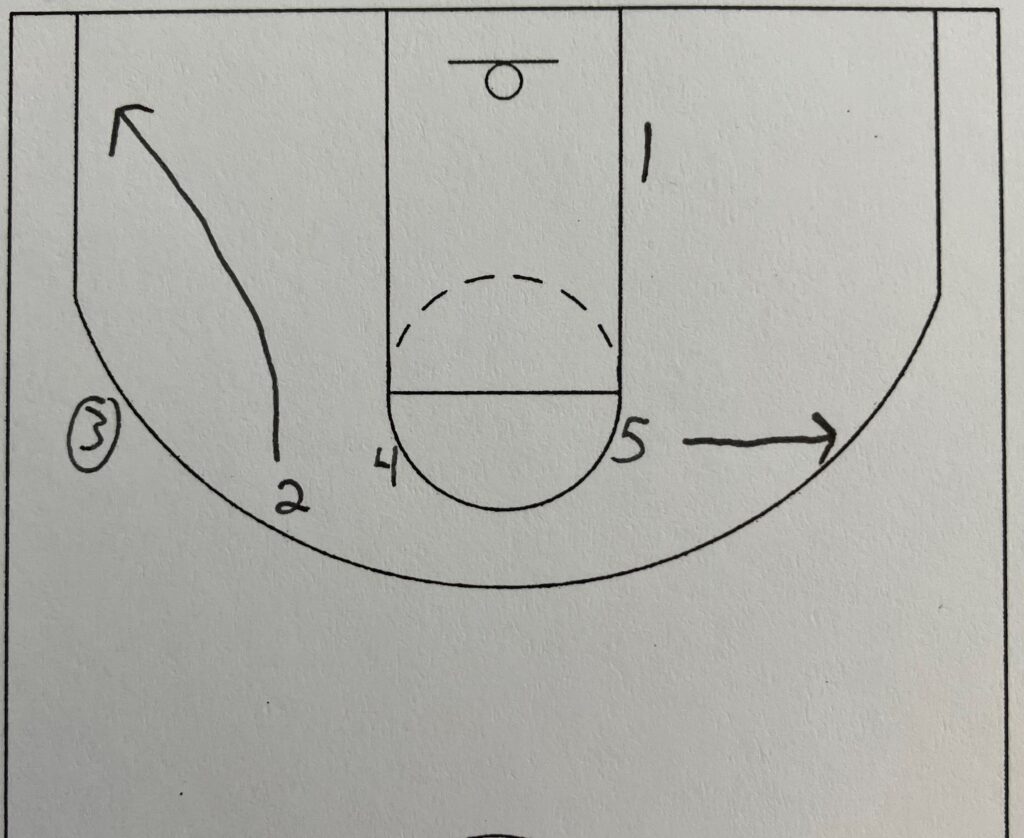
This play starts out just like play #2 above. The point(1) enters the ball with a pass to the wing(2). The point(1) smash cuts but this time stays on the ball side block rather than going out to the corner. This will make sense in the 2nd half of the play. The wing(2) comes across using the double ball screen that is the horns movement. If the wing(2) can not get to the basket off the horns screens then the wing(2) passes out to the forward(3) and cuts to the corner. The center(5) steps out to the backside wing. These one or two steps out away from the middle of the court is necessary for the 2nd half of the play.
At this point in the play, everything is basically the same as the previous play. This is done by design. Here I have two separate plays that look identical in setup and movement until the very end. This makes it hard on defenses to know what is coming and how to defend it. This keeps the defense guessing on what the offense is going to do next.
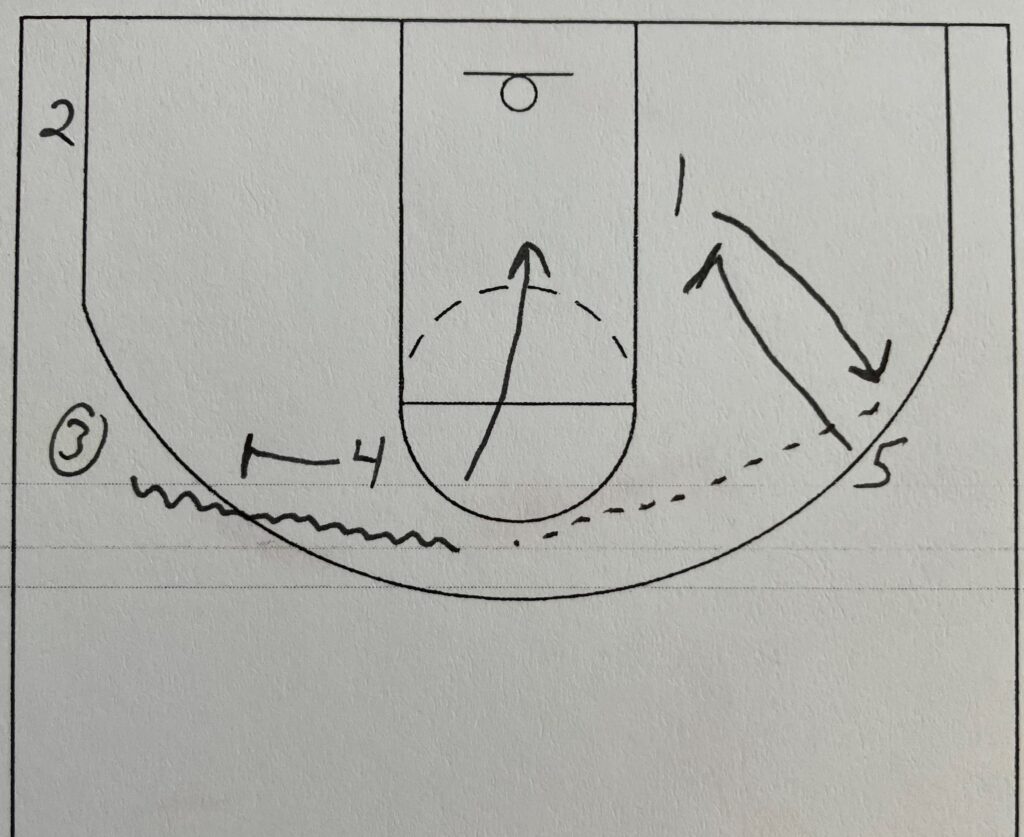
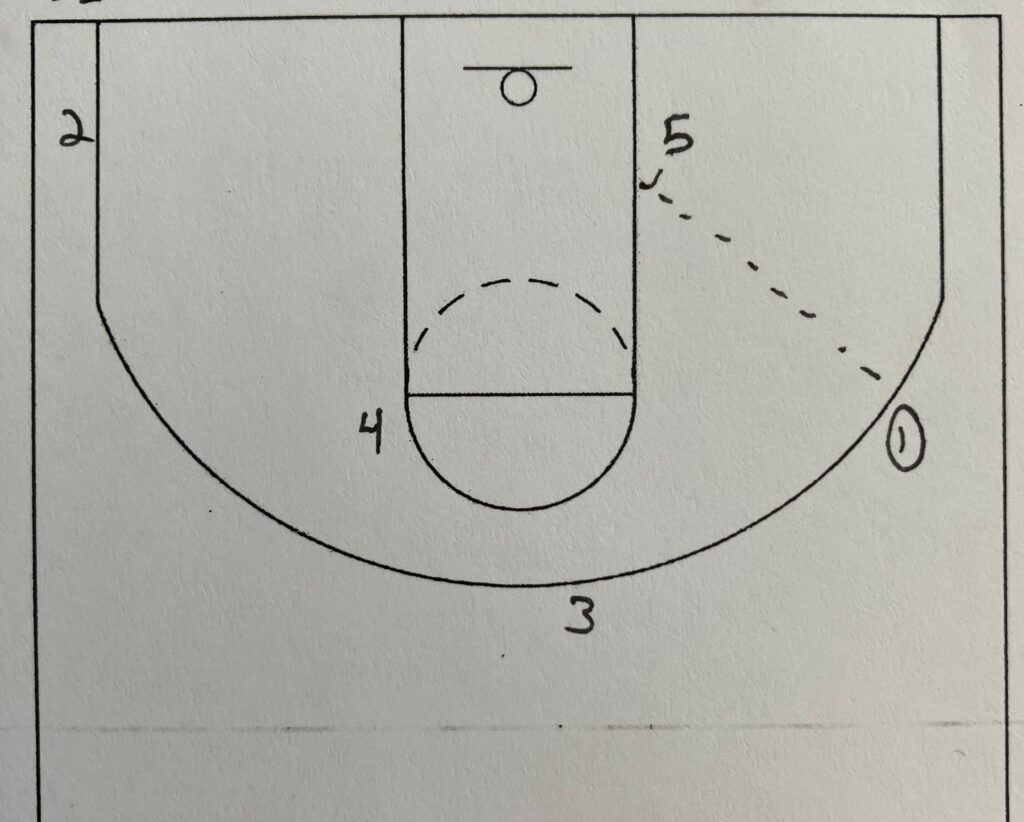
In play #2 the big(4) and center(5) set the double stagger away after the initial horns. Now they are going in opposite directions. The big(4) turns and sets another ball screen after the horns movement. The forward(3) uses the ball screen looking to get to the basket. As the ball screen is being set, the center(5) is setting a down screen for the point(1).
Going back to the first slide on this play, I had the point(1) go to the block rather than the corner. This is why. By the point(1) being on the block, it gives the center(5) a good angle to set the down screen. Likewise, I had the center(5) step out to the wing in the 3rd slide. These couple of steps help to get a good angle for this down screen as well.
I have the big(4) pick and pop. I do not want the big(4) to roll off of the ball screen. I want the block area as open as possible so I do not want the big(4) and their defender down there.
If the forward(3) can not get the layup off the ball screen, then they pass out to the point(1) off the down screen. The center(5) seals their defender off the down screen and the point(1) passes the ball into the post immediately on the catch. And now the center(5) has a good angled pass to them as well as a bunch of open space to make a move and score.
The horns starts in a double ball screen scenario but these sets can be used to isolate a player on the block for a post feed. This play has a lot of stuff going on but it is really a big disguise on what the offense is trying to do. And that is get a post player isolated on the block with a good chance of sealing their defender after a down screen.
Play #4
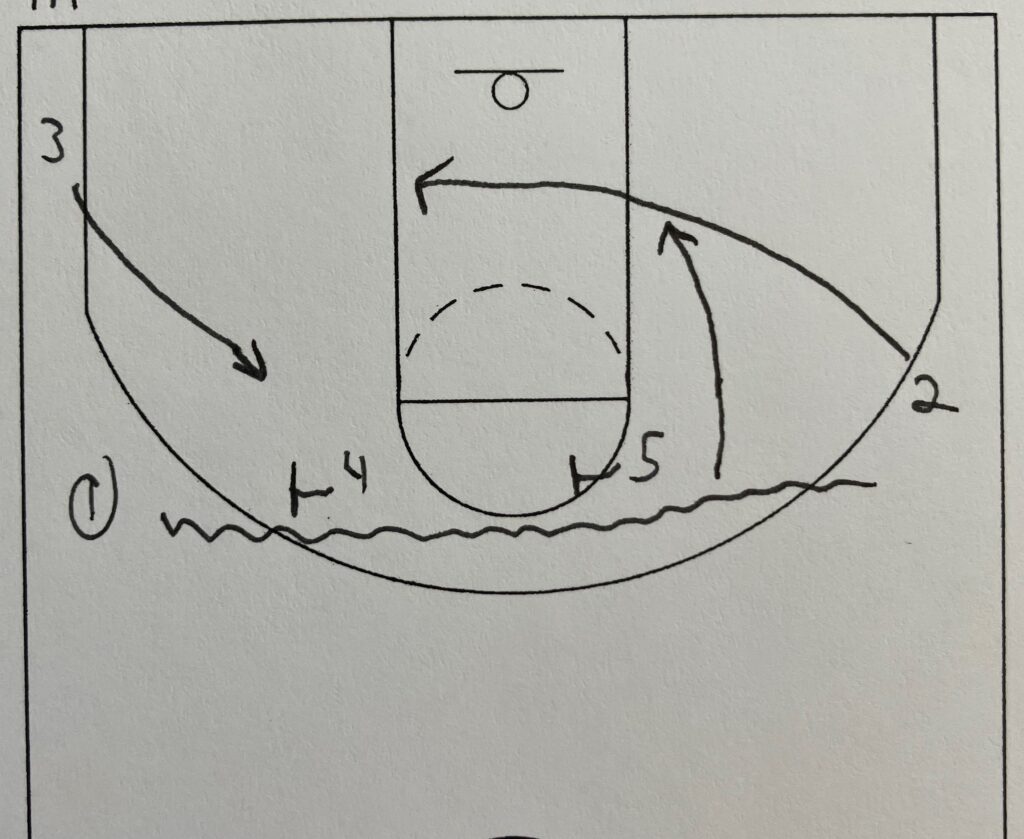

This last play is another quick set with quite a few options to score. The point(1) gets the ball to a wing and comes off the horns movement. The wing(2) cuts under the block to the other side of the floor. This clears out the entire right side of the floor. The forward(3) comes up out of the corner and stands next to the big(4).
If the point(1) is a great player then they should love this play. The point(1) can turn the corner off the horns screens and score. If the point(1) does not turn the corner then they keep their dribble and move out to the wing. The wing(2) has now cleared out to the backside. The point(1) and center(5) are the only two offensive players on ballside. The center(5) turns off the horns and sets another ball screen for the point(1).
On the ball screen the point(1) can refuse and attack the baseline. The point(1) can use the screen and attack the basket. The point(1) can pass to the center(5) either on a roll or pop depending on what your team does on ball screens. The point(1) has the ball and has a bunch of different options right off the bat mostly to score himself.
If the point(1) does not score off of the ball screen then the guard(2) is coming up off of the double screen from the forward(3) and big(4). The last option is the guard(2) making the long loop run from the wing all the way around to the top of the key. The hope is the guards(2) defender will get caught stepping up to help on either the horns movement or the pick and roll by the point(1) and center(5) and lose their man. The guard(2) coming up off the double screen for the 3-pointer should be open but could be really open if their defender gets caught ball watching.



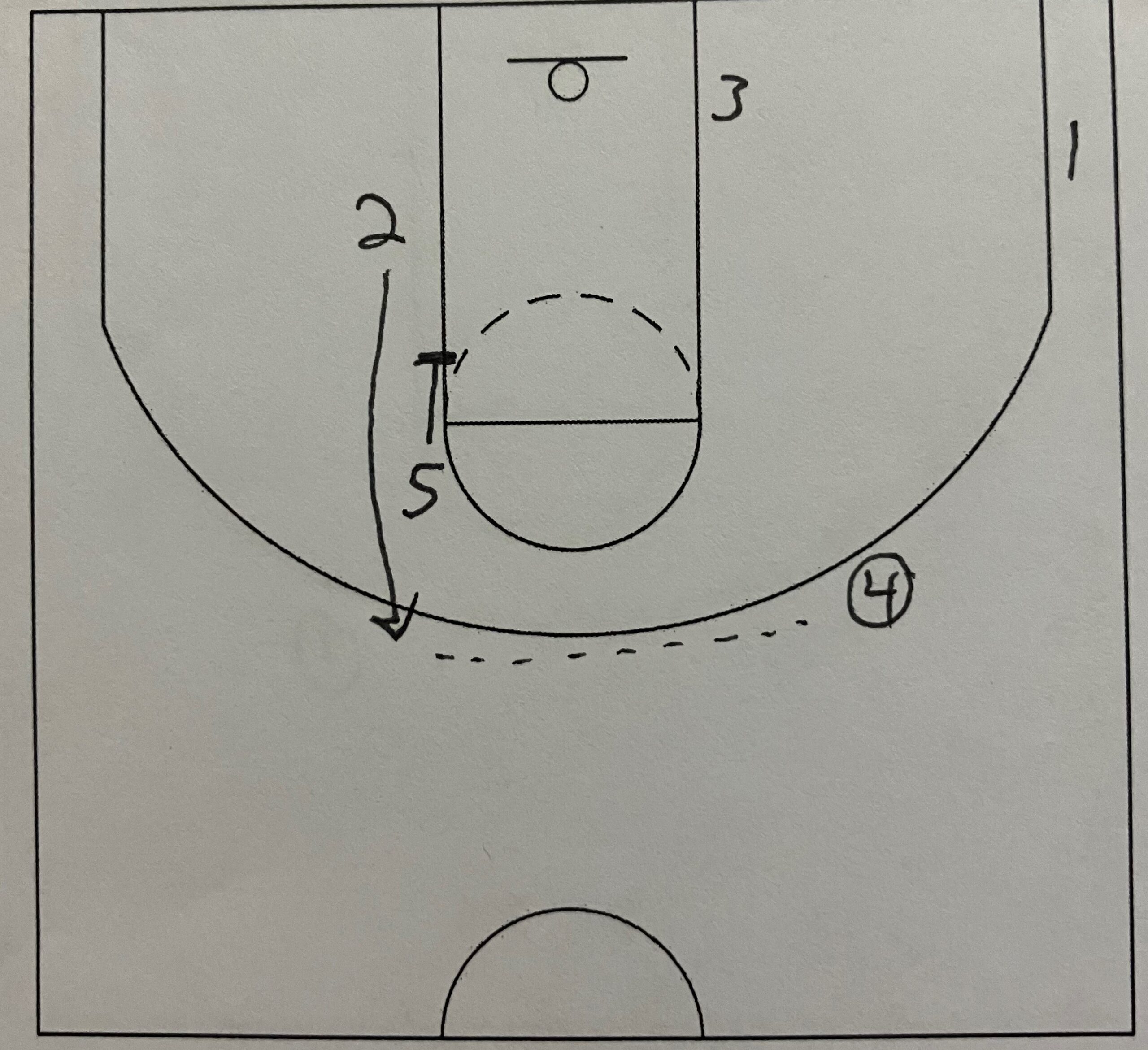
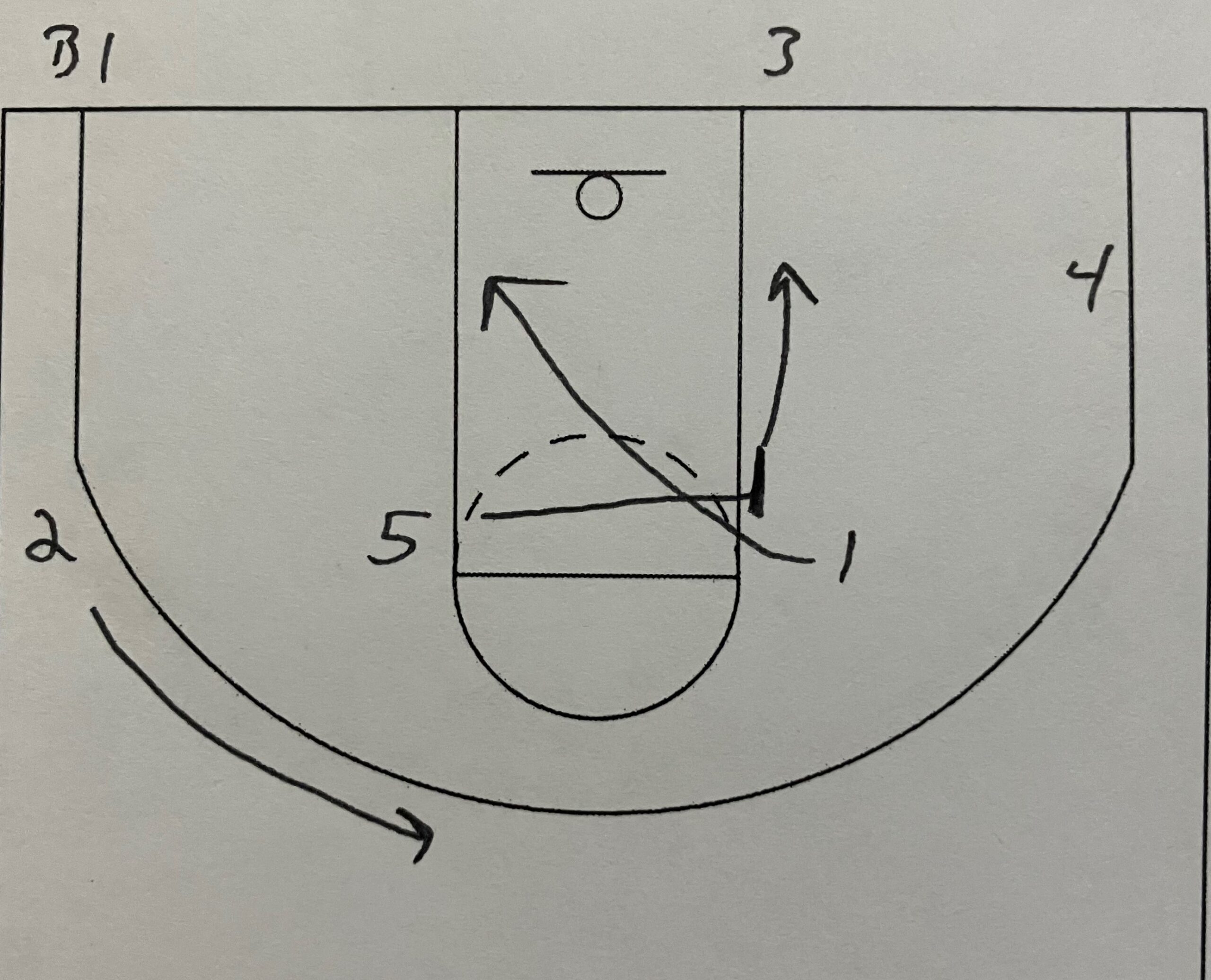
4 thoughts on “Quick Hitters out of a Horns Set”